Akoya Pearls vs. South Sea Pearls: Exploring the Differences and Choosing the Perfect Pearls

Welcome to the world of pearls, where timeless elegance and natural beauty converge to create exquisite jewelry pieces cherished for generations.
Pearls have captivated humanity for centuries, their iridescent sheen and lustrous appeal symbolising sophistication and grace.
Among the myriad pearls, Akoya pearls and South Sea pearls stand out as two of the most sought-after varieties.
Akoya pearls, renowned for their perfectly round shapes and brilliant shine, are predominantly cultivated in Japan and are treasured for their classic and delicate appearance.
On the other hand, South Sea pearls, grown in the pristine waters of the South Pacific, are celebrated for their larger size, opulent glow, and captivating array of colors.
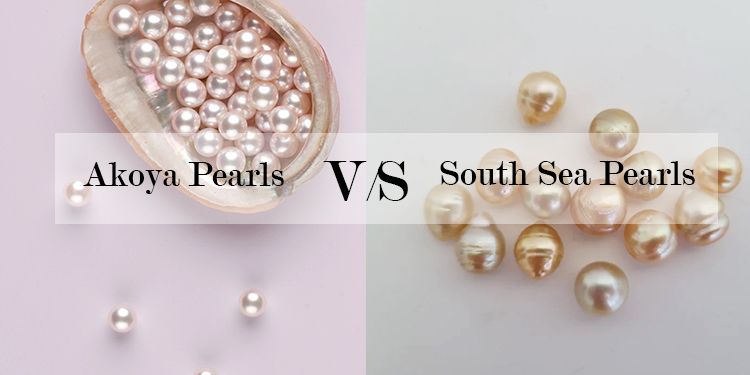
In this exploration of Akoya pearls vs South Sea pearls, we will delve into the key differences that set these enchanting gems apart,
aiding you in making an informed choice when selecting the perfect pearls to adorn yourself or a loved one.
So, whether it's the refined charm of Akoya pearls or the grandeur of South Sea pearls, let's embark on this journey to discover the unique allure each one holds.
Understanding Akoya Pearls
What are Akoya Pearls?
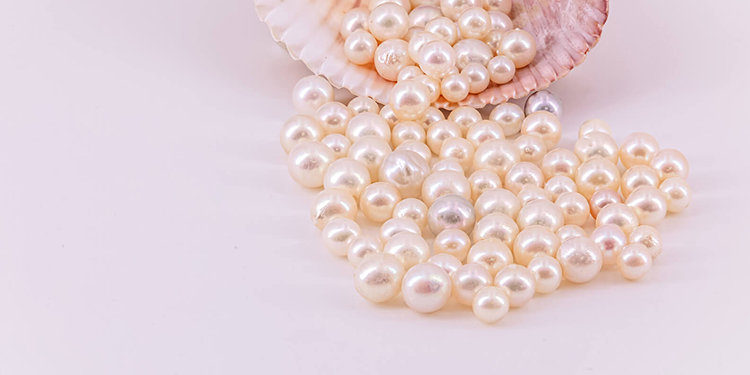
Akoya pearls are exquisite gems that originate from Japan's coastal waters.
Their history dates back to the early 1900s when the first cultured Akoya pearls were successfully cultivated.
These pearls are renowned for their classic and delicate appearance, making them a popular choice for elegant jewelry.
Advantages of Akoya Pearls
The timeless elegance of Akoya pearls lies in their perfectly round shapes and captivating luster.
They come in various sizes, shapes, and colors, allowing for various jewellery designs that suit individual preferences and styles.
Factors Affecting Akoya Pearl Quality
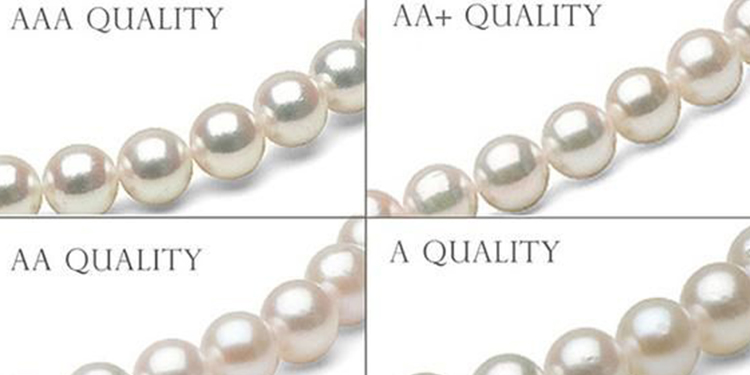
Luster is crucial in Akoya pearls, determining their glow and radiance.
Evaluating the surface quality ensures a smooth and blemish-free pearl.
The size of Akoya pearls also impacts their value, with larger pearls often considered more valuable.
Caring for Akoya Pearls
It's essential to keep Akoya pearls away from harsh chemicals and perfumes.
Regularly wipe them gently with a soft cloth to maintain their shine.
Store them separately in a soft pouch to prevent scratching when not in use.
Unveiling South Sea Pearl
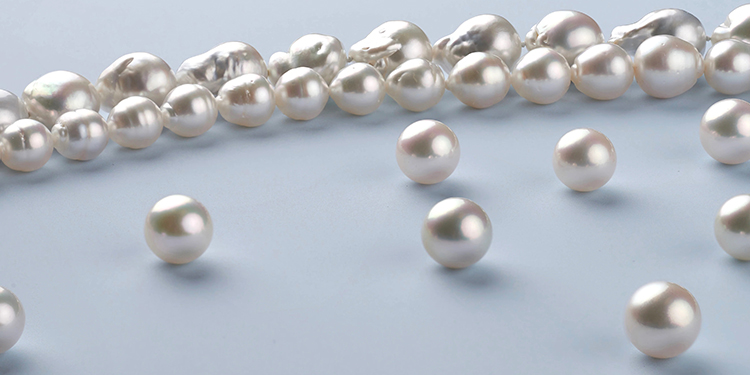
South Sea pearls, a marvel of nature, are cherished for their unmatched beauty and scarcity.
These exceptional pearls originate from the warm waters of the South Pacific, with prime cultivation regions including Australia, Indonesia, and the Philippines.
What sets South Sea pearls apart is their notably large size, ranging from 9mm to an impressive 20mm, making them some of the most sizeable pearls in the world.
One of the key factors contributing to their allure is the saltwater cultivation process.
These pearls are meticulously nurtured within the Pinctada maxima oyster, the largest pearl-producing oyster species.
The oysters thrive in pristine marine environments, imparting a unique radiance and luxury to the pearls they produce.
The Allure of South Sea Pearls

South Sea pearls exude a captivating charm, reflecting exquisite beauty and unparalleled luxury.
Their luminous glow and satin-like surface set them apart from other pearl varieties.
Compared to freshwater pearls, which are smaller and more abundant, South Sea pearls boast a rare and majestic grandeur.
Their coveted large size and distinct shapes make them a favorite among discerning jewelry connoisseurs.
From perfectly round pearls to unique baroque shapes, each gem carries a distinct personality, adding to its individuality and desirability.
Assessing South Sea Pearl Quality
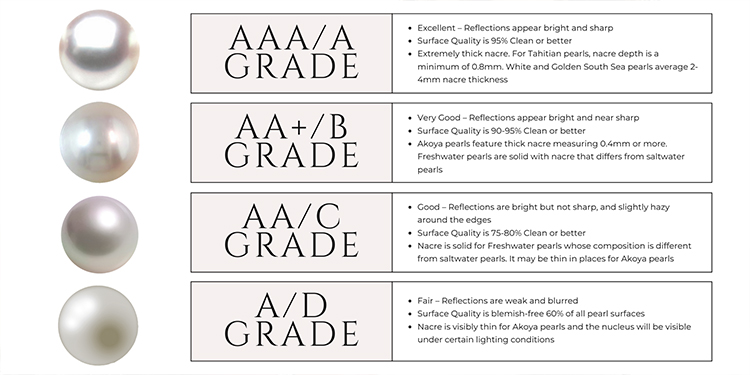
Understanding the grading system is essential when evaluating South Sea pearls.
Factors such as luster and orientation significantly impact their quality.
Luster refers to the brilliance and glows on the pearl's surface, while orientation relates to the captivating iridescence visible in some pearls.
Surface perfection is another vital aspect, with top-quality pearls displaying minimal blemishes and imperfections.
Pearls with higher grades possess enhanced brilliance and an alluring play of colors.
Caring for South Sea Pearls
To maintain their natural radiance, South Sea pearls require proper care.
Avoid exposing them to harsh chemicals, perfumes, or excessive heat.
When handling, ensure your hands are clean and free from abrasive substances.
Proper storage is vital; keep them separate from other jewelry to prevent scratching.
Wipe them with a soft cloth to remove dirt and maintain their luminous glow for generations.
Akoya Pearls vs. South Sea Pearls: A Comparative Analysis
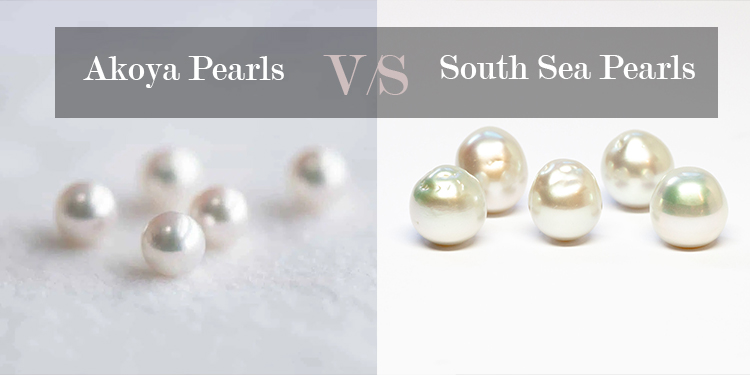
When choosing the perfect pearls, understanding the differences between Akoya pearls and South Sea pearls is essential.
Let's explore their unique features in this comparative analysis.
Size and Shape Differences
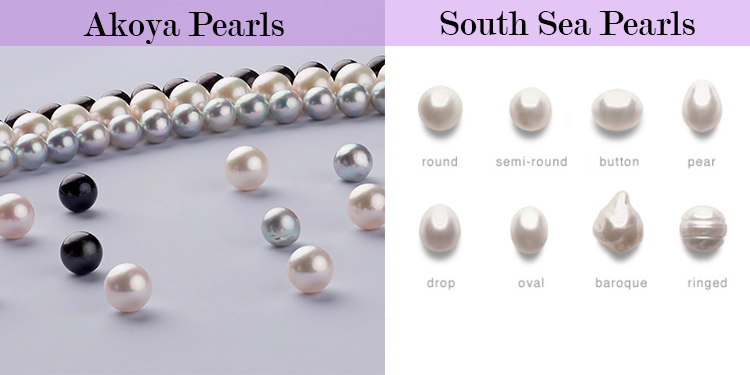
Akoya pearls are available in varied sizes, offering options for those seeking smaller to medium-sized pearls.
In contrast, South Sea pearls boast a significant size advantage, more extensive than most other pearl types.
Akoya and South Sea pearls come in various shapes, including round, oval, and teardrop.
Color Spectrum and Overtone Distinctions

Akoya pearls are traditionally known for their classic white and cream colors.
Meanwhile, South Sea pearls exhibit a stunning array of unique and diverse colors, including silver, gold, and shades of blue and green.
The overtone, a subtle secondary color, also plays a role in the pearls' appearance, enhancing their beauty.
Luster and Brilliance Comparison
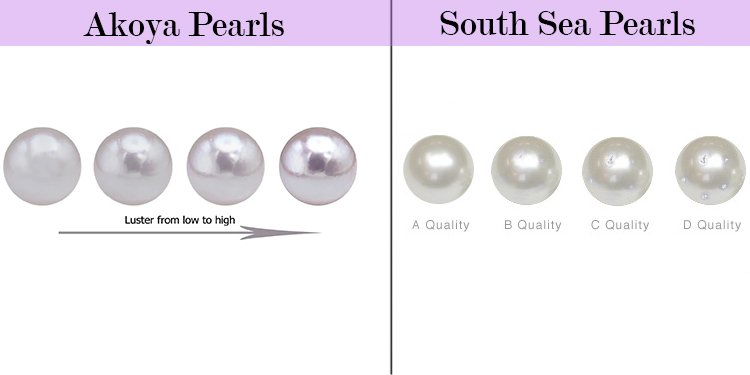
Akoya pearls are valued for their high luster, which adds a subtle glow to their surface.
On the other hand, South Sea pearls are renowned for their mirror-like shine and exceptional brilliance, making them stand out with unmatched radiance.
Luster significantly influences the value and beauty of both types.
Surface Quality: Flaws and Imperfections
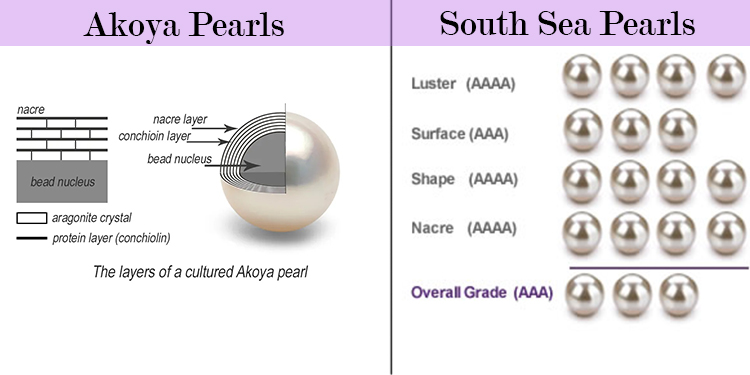
Akoya pearls may have some surface imperfections, but they are generally more affordable due to their higher availability.
In contrast, finding blemish-free South Sea pearls is rarer, contributing to their higher value.
Balancing surface quality considerations with price is important.
Pricing and Affordability Factors
The price of Akoya pearls is influenced by size, shape, and surface quality, making them relatively more affordable.
They are larger, rarer, and exhibit outstanding qualities.
South Sea pearls are an investment-worthy option for those seeking exquisite and valuable jewellery.
Akoya Pearls vs. South Sea Pearls FAQs
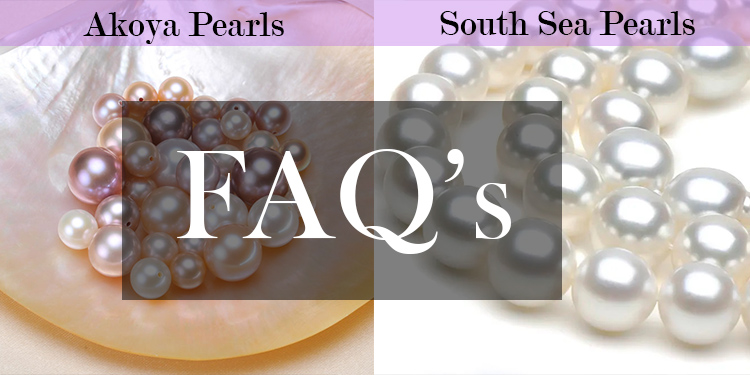
Are Akoya pearls more affordable than South Sea pearls?
Akoya pearls are more affordable than South Sea pearls due to size, availability, and surface quality, making them a popular choice for those seeking elegance on a budget.
Which type of pearl offers a greater variety of colors?
South Sea pearls offer a greater variety of colors, including striking shades of silver, gold, blue, and green.
Their diverse and unique color spectrum sets them apart from other types of pearls.
How do I distinguish between natural and cultured pearls?
Distinguishing between natural and cultured pearls is crucial.
Natural pearls form organically in oysters without human intervention, while cultured pearls are created through oyster farming, where humans introduce the irritants.
Are South Sea pearls always larger than Akoya pearls?
Yes, South Sea pearls are typically larger than Akoya pearls.
They boast a size advantage, often more prominent in diameter, making them stand out with their grandeur and opulent appeal.
Can Akoya pearls and South Sea pearls be used together in jewelry?
Absolutely! Akoya pearls and South Sea pearls can be beautifully combined in jewelry designs.
Their unique size, color, and luster differences create a stunning contrast that adds sophistication and elegance to any piece.
What is the average lifespan of Akoya pearls and South Sea pearls?
The average lifespan of Akoya pearls and South Sea pearls is remarkably long, ranging from several decades to a lifetime, making them enduring treasures that can be passed down through generations.


Leave a Comment